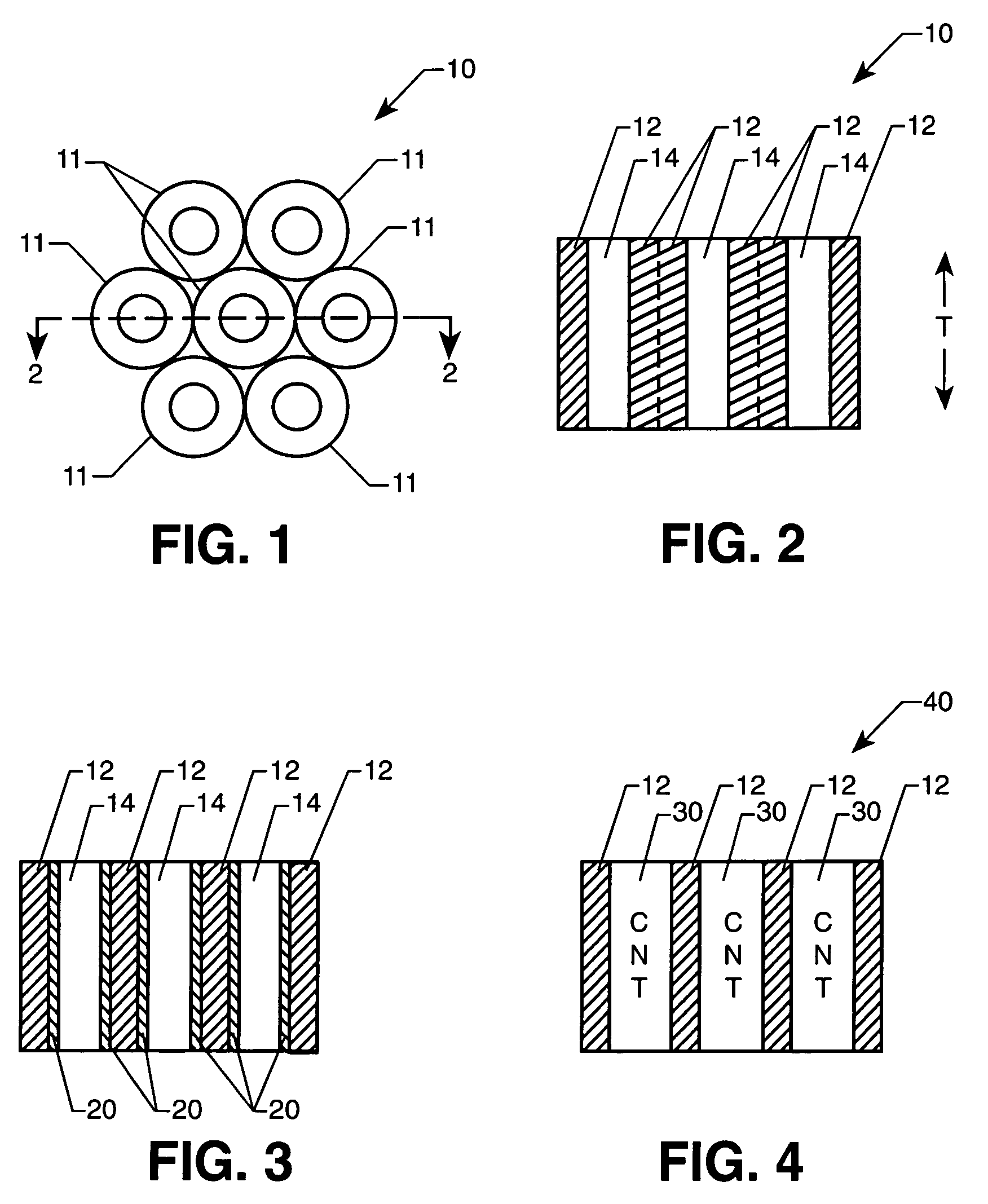Templated growth of carbon nanotubes
a carbon nanotube and growth technology, applied in the direction of nanoinformatics, crystal growth process, polycrystalline material growth, etc., can solve the problems of reducing the effectiveness of mechanical reinforcement, reducing the quality of cnts, and unable to achieve individual and separated cnts of uniform length and diameter at a reasonable cost, and achieve cost-effective effects
- Summary
- Abstract
- Description
- Claims
- Application Information
AI Technical Summary
Benefits of technology
Problems solved by technology
Method used
Image
Examples
Embodiment Construction
[0019]Referring now to the drawings, and more particularly to a top view in FIG. 1 and a cross-sectional view in FIG. 2, a synthesized template for use in the present invention is shown and is referenced generally by numeral 10. Template 10 is formed by a close pack configuration of hollow mesoporous cylinders 11 arranged in a hexagonal pack. This arrangement of cylinders 11 defines a mesoporous silica 12 (FIG. 2) having approximately cylindrical pores 14 formed therein that serve as the mold for growing carbon nanotubes (CNTs) in accordance with the present invention. In this illustrated example, mesoporous silica 12 is of uniform thickness T with individual approximately cylindrical pores 14 extending all the way therethrough. Pores 14 are straight and can be parallel to one another as shown. When it is desired to produce a quantity of CNTs having substantially uniform diameters, each of approximately cylindrical pores 14 should have the same (or nearly the same) diameter. For exa...
PUM
| Property | Measurement | Unit |
|---|---|---|
| temperature | aaaaa | aaaaa |
| weight percent | aaaaa | aaaaa |
| temperatures | aaaaa | aaaaa |
Abstract
Description
Claims
Application Information
 Login to View More
Login to View More - R&D
- Intellectual Property
- Life Sciences
- Materials
- Tech Scout
- Unparalleled Data Quality
- Higher Quality Content
- 60% Fewer Hallucinations
Browse by: Latest US Patents, China's latest patents, Technical Efficacy Thesaurus, Application Domain, Technology Topic, Popular Technical Reports.
© 2025 PatSnap. All rights reserved.Legal|Privacy policy|Modern Slavery Act Transparency Statement|Sitemap|About US| Contact US: help@patsnap.com

